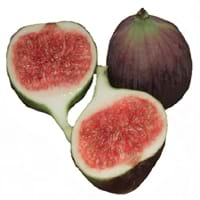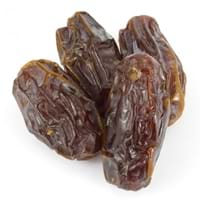Health Benefits
Cancer prevention, Controls blood pressure, Heart care, Increase in haemoglobin, Prevents constipation, Prevents macular degeneration, Reduces nervous tension
Cancer prevention, Cures gastro-intestinal troubles, Diarrhea treatment, Heart care, Heat stroke treatment, Improves muscular strength, Prevents constipation, Prevents nerve damage, Strengthening of bones
General Benefits
Controls blood pressure, Helps in weight loss, Maintains healthy cholesterol level, Strengthens bones
Boosts immune system, Maintains healthy cholesterol level, Strengthens bones
Skin Benefits
Brightens and lightens complexion, Hydrates skin, Skin rejuvenation, Treatment of acne
Anti-aging benefits, Brightens and lightens complexion, Reduces wrinkles, Treatment of skin diseases
Hair Benefits
Good conditioner, Regulates hair growth, Softening mask
Prevents hair loss, Promotes longer and healthier hair, Protects hair, Regulates hair growth
Allergy Symptoms
Abdominal pains, Anaphylaxis, Coughing, Headaches, Hives, Itching, Nasal congestion, Skin rash, Sneezing, Sore throat, Swelling of hands
Redness of eyes, Runny nose, Sneezing, Watery eyes
Side Effects
Allergic reaction, Skin rash, Possibly unsafe during pregnancy
Allergic reaction, Diarrhoea, Intestinal gas, Stomach pain, Tooth decay, Weight gain
Best Time to Eat
Best if taken as a breakfast (or empty stomach), Don't consume at night and before bed, Morning time (before lunch)
Any time except an hour after meal, Don't consume at night and before bed
Vitamin B5 (Pantothenic Acid)
Vitamin C (Ascorbic Acid)
Vitamin K (Phyllochinone)
Phytosterol
Not Available
Calories in Fresh Fruit with Peel
Calories in Fresh Fruit without Peel
Not Available
Not Available
Calories in Frozen Form
Not Available
Calories in Canned Form
Not Available
Season
Summer, Winter
Spring, Summer
Varieties
Abyad, Adriatic, Alma, Atreano, Bataglia, Black Bethlehem, Black Madeira, Black Mission, Brown Turkey, Sierra, Calimyrna, Kadota, Deanna, Figoin and Hardy Chicago Fig
Barhi, Dayri, Deglet Noor, Halawy, Khadrawy, Medjool, Thoory and Zahidi
Color
Green, Purple, Red
Black, Brown, Red, Yellow
Soil Type
Clay, Limestone, Loam, Sandy
Clay, Loam, Sand
Climatic Conditions
Dry, Warm
Hot, Warm
Facts about
- Fig tree is considered as a symbol of abundance, fertility and sweetness.
- The fig is made up of 55% of natural sugar so they are the sweetest fruits.
- Figs are used as a fat substitute in recipes.
- Date is known as the tree of life in Middle east.
- Date palms cover 3% of the earth's total farmlands.
- Scholars believe that date (and not apple) was the real fruit mentioned in the Bible's Garden of Eden.
Spirits
Yes
Not Available
Cocktails
Yes
Not Available
Top Producer
Turkey
Egypt
Other Countries
Albania, Algeria, Brazil, Egypt, Iran, Morocco, Syria, Tunisia, United States of America
Algeria, Iraq, Oman, Pakistan, South Africa, United Arab Emirates
Top Importer
France
India
Top Exporter
Turkey
United Arab Emirates
Botanical Name
Ficus carica
Phoenix Dactylifera
Synonym
Not Available
Not Available
Subkingdom
Tracheobionta
Tracheobionta
Division
Magnoliophyta
Magnoliophyta
Class
Magnoliopsida
Liliopsida
Subclass
Alismidae
Arecidae
Family
Moraceae
Arecaceae
Species
Ficus carica
P. dactylifera
Generic Group
Mulberry
Palm
Difference Between Fig and Date
We might think that Fig and Date are similar with respect to nutritional value and health benefits. But the nutrient content of both fruits is different. Fig and Date Facts such as their taste, shape, color, and size are also distinct. The difference between Fig and Date is explained here.
The amount of calories in 100 gm of fresh Fig and Date with peel is 74.00 kcal and 282.00 kcal and the amount of calories without peel is Not Available and Not Available respectively. Thus, Fig and Date belong to Low Calorie Fruits and High Calorie Fruits category.These fruits might or might not differ with respect to their scientific classification. The order of Fig and Date is Rosales and Arecales respectively. Fig belongs to Moraceae family and Date belongs to Arecaceae family. Fig belongs to Ficus genus of Ficus carica species and Date belongs to Phoenix genus of P. dactylifera species. Beings plants, both fruits belong to Plantae Kingdom.









